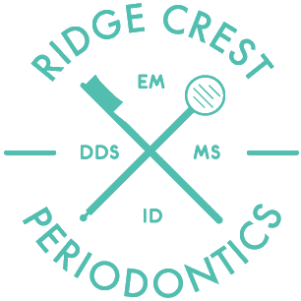Gum Disease Treatment

Gum disease is prevalent across the United States and whether you’re just in the early stages of gum disease (gingivitis) or have full-blown periodontitis, which is the most advanced stage of gum disease that damages the soft tissue of the mouth, resulting in possible tooth and bone loss if left untreated, there’s good news for you.
The good news is, that no matter what stage of gum disease you are experiencing, there is a solution for you. To ensure that you’re given the best treatment with your dental and health goals in mind, Dr. Moulton will schedule a preliminary oral examination to sit down with you to determine which type of gum disease treatment plan is right for you, giving you the most predictable, best aesthetic, and long term outcome from your treatment.
Since periodontal disease is so intrinsically connected to all parts of the body, our Idaho Falls periodontal office takes periodontal disease very seriously. This is why Dr. Moulton takes the time to do a thorough medical and dental history review during all Comprehensive Periodontal Evaluations. He dedicates time to get to know each of his patients personally. This is to ensure that he meets your physical, emotional well-being, and overall health needs through your individualized periodontal treatment.
Our Idaho Falls dental office treats gum disease according to the individual, we offer minimally invasive options as well as more extensive gum disease procedures in Idaho Falls for our patients. Contact Ridge Crest Dental Implants & Periodontics to schedule your appointment today and learn more about our gum disease treatment options below.

Before

After
LANAP For Periodontal Pocket Reduction in Idaho Falls
In 2008, Dr. Moulton became the first dentist in Idaho to be certified to provide the Laser Assisted New Attachment Procedure (LANAP) by use of the Periolase Laser. LANAP is a less invasive approach to periodontal pocket reduction that boasts less pain and more success than traditional periodontal surgery. {LANAP Video}
Periodontal pockets form when the seal around your teeth is broken and debris, calculus, food, and bacteria sneak in past this broken seal below the gum line.
When not removed, items below the gum line can irritate the gum tissue. They can attach to the root of the tooth creating a “periodontal pocket”. If left untreated, these pockets can lead to infection and, eventually, bone loss. However when the problem is addressed early, treated correctly, and followed up with routine care, many patients are thrilled with their post-periodontal treatment results. In some cases, additional treatment may be recommended, especially if bone loss is present. A conversation with Dr. Moulton will help you to understand your individual periodontal needs and the types of products he recommends for you once he has completed a thorough exam, presented his findings and has recommended the best course of treatment to bring you back to full health.
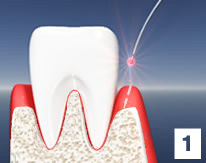
Laser accessing the pocket
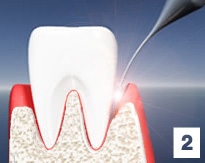
Selectively removes diseased tissue, leaving important connective fibers in place
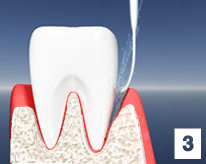
Ultrasonic scaler removes root surface deposits
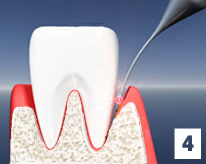
Laser finishes debriding the pocket
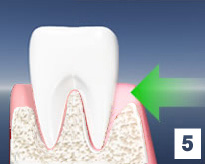
The tissue is compressed against the root surface and a stable fibrin clot forms
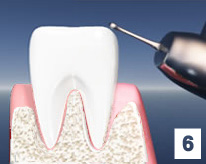
The bite is adjusted where needed to balance the forces on the teeth
This is an FDA approved periodontal procedure provided by a dentist trained & licensed by the Institute for Advanced Laser Dentistry. It uses the PerioLase MVP Laser from Millennium Dental Technologies that offers selective settings specifically suited for periodontal & soft tissue treatments. Additionally, the procedure includes bite adjustments to even out the load being placed on the teeth and supporting structures.
Pinhole Surgical Technique for Receding Gums in Idaho Falls
Receding gum lines are also another side effect of gum disease and must be dealt with as soon as possible. Thin tissue and recession are very common. In fact, these conditions account for at least one-third of the patients treated in our practice. Many patients experience very few, if any, symptoms with this type of periodontal disease. However, just because it doesn’t hurt, doesn’t mean that it isn’t a serious condition! If your dentist or hygienist is concerned about your gum tissue…you should be too.
Gum recession, or gingival recession, is just like it sounds. The gum line recedes from the tooth. This recession can cause a myriad of problems to arise, including leaving the root of the tooth exposed making you more sensitive to cold and hot food, drinks, and temperatures. Furthermore, this puts you at a greater risk of losing the exposed tooth or teeth.Depending on the severity of your gum recession, will determine if you are a good candidate for Pinhole Surgical Technique. A minimally invasive gum disease treatment option in Idaho Falls that can be used as an alternative to more aggressive periodontal treatment methods like root coverage grafting. Pinhole surgical technique in Idaho Falls has many benefits, but may not be for everyone. The main advantage of pinhole surgery apart from its minimally invasive application is that it can be used to treat the entire mouth in just one appointment! Talk with Dr. Moulton at your appointment to see if this efficient technique is the best way to solve your gum recession.
Root Coverage Grafting for Receding Gums in Idaho Falls
When the supportive tissue around your tooth is too thin to support the root of your tooth properly, your Idaho Falls dentist or hygienist may tell you that you have “thin tissue” or “a lack of attached tissue”. This is another way to describe gum recession. As previously mentioned recession can cause sensitivity to hot or cold liquids, an increase in cavities, and eventually may even lead to tooth loss because your tooth has lost the support it needs. The tooth becomes mobile and bone loss occurs at the root level. For this reason, it is critical to your dental and overall health that you discuss your options with an experienced periodontist near you.
Dr. Moulton specializes in caring for patients who need root coverage grafting. It is one of his favorite types of treatment to offer to his patients. Depending upon the type and severity of your specific periodontal gum disease issue, there are several different types of root coverage treatments available. Dr. Moulton enjoys sitting down with his patients during an oral examination to determine which type of grafting procedure will give each individual the most predictable, best aesthetic and dental health option, and long-term outcome.
Periodontal Disease FAQ's
There are typically two stages of gum disease: gingivitis and periodontitis.
Gingivitis: This is the early stage of gum disease, characterized by inflammation of the gums. The main symptoms of gingivitis are red, swollen gums that bleed easily when brushed or flossed. At this stage, the condition is reversible and can often be treated by practicing good oral hygiene and visiting a dentist for regular cleanings.
Periodontitis: If gingivitis is not treated, it can progress to periodontitis. This is a more advanced gum disease in which the inflammation and infection begin to damage the bone and other structures that support the teeth. Symptoms of periodontitis can include deeper pockets between the gums and teeth, crooked teeth, receding gums, severe gum infection, loose teeth, and even tooth loss. Treatment for periodontitis typically involves a deep cleaning procedure called scaling and root planing, in addition to antibiotics to kill bacteria. In advanced cases, surgery may be necessary.
Certain factors increase the risk for advanced gum disease:
Smoking
Diabetes
Poor oral hygiene
Stress
Heredity
Preventing gingivitis, the early stage of gum disease is largely a matter of maintaining good oral hygiene. Brushing and flossing your teeth daily, eating a healthy diet, maintaining good oral hygiene, and visiting your dental hygienist for regular check-ups and professional cleaning are some ways to prevent warning signs of severe gingivitis.
